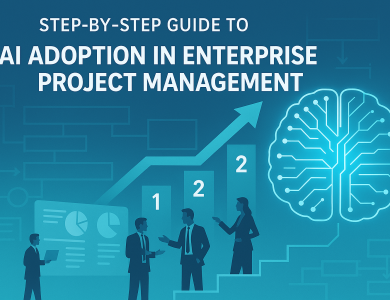
Have you ever felt the frustration of a project derailing just when it was supposed to take off? I’ve been there, watching deadlines slip away and wondering how we could have predicted those unforeseen hiccups. That’s where Artificial Intelligence (AI) steps in, revolutionizing the way we manage projects by detecting anomalies that could lead to delays.
Understanding Anomaly Detection in AI
Anomaly detection is like having a vigilant project manager who’s always on the lookout for anything out of the ordinary. AI systems analyze vast amounts of data from various project stages, identifying patterns and flagging deviations that might indicate potential delays. By recognizing these anomalies early, teams can take proactive measures to stay on track.
Real-Life Example: Manufacturing Project
Imagine overseeing a manufacturing project with tight deadlines. One day, the AI notices a sudden drop in production efficiency—a subtle anomaly that human eyes might miss amidst the daily operations. By alerting the team immediately, they can investigate and address the issue before it cascades into significant delays. This proactive approach is a game-changer in project management.
Key Benefits of AI-Driven Anomaly Detection
- Early Warning System: AI identifies potential issues before they escalate.
- Data-Driven Insights: Decisions are based on comprehensive data analysis.
- Resource Optimization: Ensures resources are allocated efficiently to prevent bottlenecks.
- Enhanced Accuracy: Reduces human error in monitoring project progress.
Integrating AI with Project Management Tools
To harness the full potential of AI anomaly detection, integrating it with your existing project management tools is essential. Platforms like ProjectNext.ai offer seamless integrations that enhance your project oversight capabilities. By combining AI insights with your workflow, you can maintain a clear vision of your project’s trajectory.
Case Study: Software Development Project
In a software development project, meeting deadlines is crucial. By integrating AI anomaly detection through ProjectNext.ai, the team was able to monitor code commits, testing phases, and deployment schedules in real-time. When the AI detected an unusual spike in bug reports, the team swiftly allocated more resources to resolve the issues, preventing a potential delay in the release.
Implementing AI for Anomaly Detection: Steps to Get Started
- Identify Key Metrics: Determine which metrics are critical to your project’s success.
- Gather Data: Collect historical and real-time data related to these metrics.
- Select an AI Tool: Choose a reliable AI-driven anomaly detection tool that integrates with your workflow.
- Train the AI: Feed the collected data into the AI system to help it learn normal patterns and identify anomalies.
- Monitor and Adjust: Continuously monitor the AI’s findings and adjust parameters as needed to improve accuracy.
Overcoming Challenges in AI Anomaly Detection
While AI offers significant advantages, it’s not without challenges. Ensuring data quality is paramount, as inaccurate data can lead to false positives or missed anomalies. Additionally, teams must be trained to interpret AI findings and take appropriate actions. Partnering with experts from platforms like ProjectNext.ai can help navigate these challenges effectively.
The Future of AI in Project Management
As AI technology continues to evolve, its role in project management will only expand. Future advancements may include more sophisticated predictive analytics, deeper integration with diverse project management tools, and enhanced user interfaces that make anomaly detection even more accessible to all team members. Embracing these technologies today sets the stage for more efficient and successful projects tomorrow.
Frequently Asked Questions
1. What types of anomalies can AI detect in projects?
AI can detect various anomalies, including unexpected delays in tasks, budget overruns, resource misallocations, and deviations from project timelines.
2. How does AI differ from traditional project management tools?
Unlike traditional tools that rely heavily on manual input and oversight, AI-driven tools analyze data in real-time, providing proactive alerts and insights to prevent issues before they escalate.
3. Can AI anomaly detection be customized for different industries?
Absolutely. AI systems can be tailored to recognize specific patterns and anomalies relevant to various industries, from manufacturing to software development.
4. What is the ROI of implementing AI anomaly detection in projects?
Implementing AI can lead to significant ROI by reducing project delays, optimizing resource usage, and enhancing overall project efficiency, ultimately saving time and costs.
5. How secure is the data used by AI for anomaly detection?
Reputable AI platforms prioritize data security with robust encryption, access controls, and compliance with industry standards to protect your project data.
Conclusion
Incorporating AI to detect anomalies is a transformative strategy for preventing project delays. By leveraging advanced data analysis and real-time monitoring, AI provides an early warning system that empowers teams to address issues proactively. Tools like ProjectNext.ai make it easier to integrate these capabilities into your workflow, ensuring your projects stay on track and succeed. Embrace the power of AI anomaly detection and watch your project management soar to new heights.



